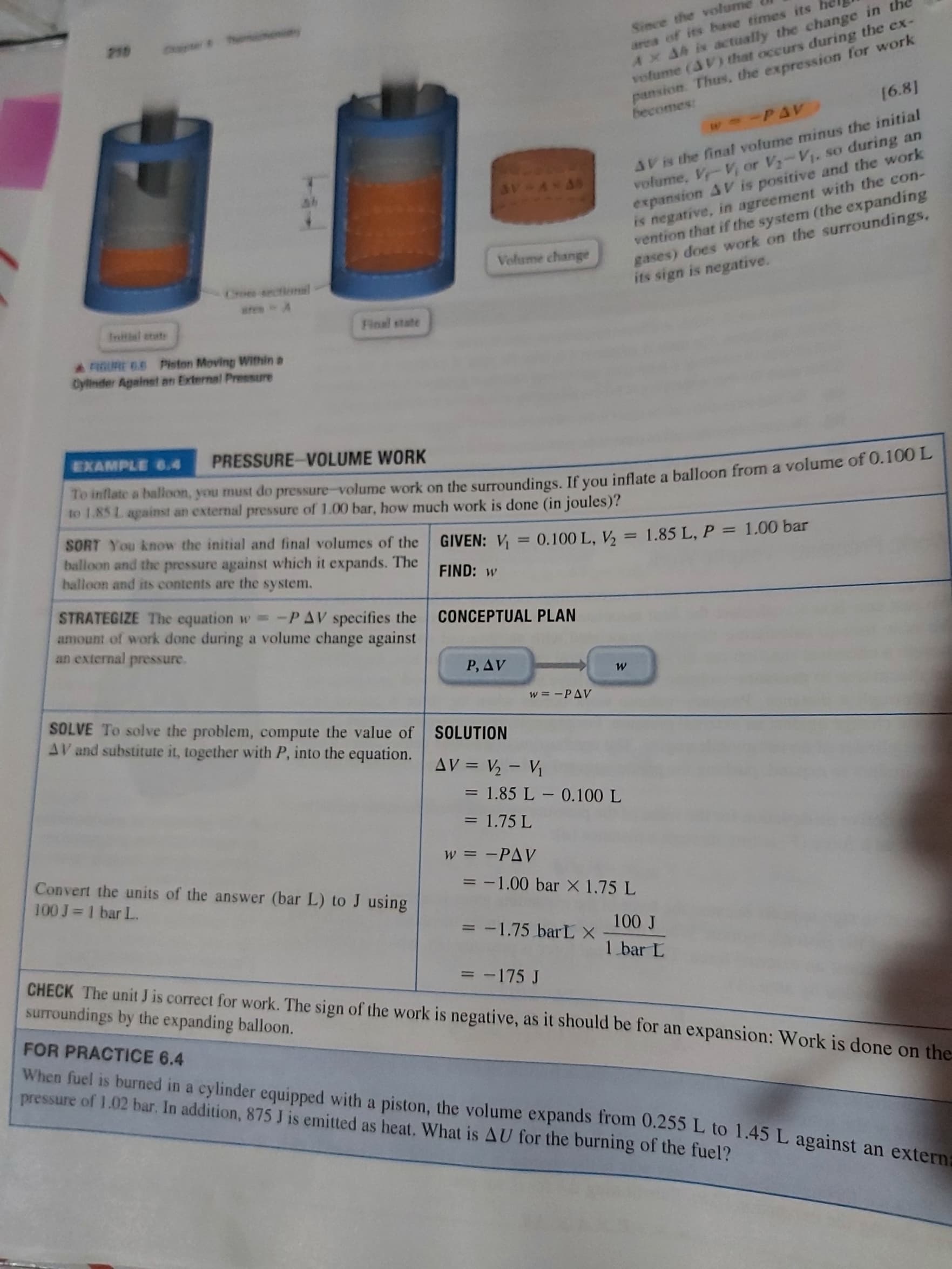Pretend you have 267 g of each of the following substances is initially at 21.6 °C. What is the final temperature of each of these substance after they absorb 0.735 kJ of heat? Use the data in Table 6.4 from the textbook.
Pretend you have 267 g of each of the following substances is initially at 21.6 °C. What is the final temperature of each of these substance after they absorb 0.735 kJ of heat? Use the data in Table 6.4 from the textbook.
Introductory Chemistry: A Foundation
9th Edition
ISBN:9781337399425
Author:Steven S. Zumdahl, Donald J. DeCoste
Publisher:Steven S. Zumdahl, Donald J. DeCoste
Chapter10: Energy
Section: Chapter Questions
Problem 7QAP
Related questions
Question
Silver, Water and Aluminum

Transcribed Image Text:Pretend you have 267 g of each of the following
substances is initially at 21.6°C. What is the final
temperature of each of these substance after they
absorb 0.735 kJ of heat? Use the data in Table 6.4
from the textbook.

Transcribed Image Text:Since the volume
area of its base times its
Ax AA is actually the change in the
volume (AV) that occurs during the ex-
pansion. Thus, the expression for work
AV is the final volume minus the initial
volume, V-V, or V-V1. so during an
expansion AV is positive and the work
is negative, in agreement with the con-
vention that if the system (the expanding
gases) does work on the surroundings,
its sign is negative.
Volume change
Choes sectional
Intial etate
Final state
A RIGURE 6.6 Piston Moving Within a
Cylinder Against an External Pressure
EXAMPLE 6.4
PRESSURE-VOLUME WORK
ae a haon, you must do pressure-volume work on the surroundings, If vou inflate a balloon from a volume of 0.100 L
to 1.85 L against an external pressure of 1.00 bar, how much work is done (in joules)?
SORT You know the initial and final volumes of the
balloon and the pressure against which it expands. The
halloon and its contents are the system.
GIVEN: V = 0.100 L, V, = 1.85 L, P = 1.00 bar
%3D
FIND: w
STRATEGIZE The equation w -PAV specifies the CONCEPTUAL PLAN
amount of work done during a volume change against
an external pressure.
P, AV
SOLVE To solve the problem, compute the value of SOLUTION
AV and substitute it, together with P, into the equation.
%3D
= 1.85 L – 0.100 L
= 1.75 L
w = -PAV
Convert the units of the answer (bar L) to J using
100 J 1 bar L.
= -1.00 bar X 1.75 L
f 00
1 bar L
3 -1.75 barL X
CHECK The unit J is correct for work. The sign of the work is negative, as it should be for an expansion: Work is done on the
surroundings by the expanding balloon.
= -175 J
FOR PRACTICE 6.4
When fuel is burned in a cylinder equipped with a piston, the volume expands from 0.255 L to 1.45L against an extern
pressure of 1.02 bar. In addition, 875 J is emitted as heat. What is AU for the burning of the fuel?
Expert Solution
This question has been solved!
Explore an expertly crafted, step-by-step solution for a thorough understanding of key concepts.
This is a popular solution!
Trending now
This is a popular solution!
Step by step
Solved in 2 steps with 1 images

Recommended textbooks for you

Introductory Chemistry: A Foundation
Chemistry
ISBN:
9781337399425
Author:
Steven S. Zumdahl, Donald J. DeCoste
Publisher:
Cengage Learning

Physical Chemistry
Chemistry
ISBN:
9781133958437
Author:
Ball, David W. (david Warren), BAER, Tomas
Publisher:
Wadsworth Cengage Learning,

Living By Chemistry: First Edition Textbook
Chemistry
ISBN:
9781559539418
Author:
Angelica Stacy
Publisher:
MAC HIGHER

Introductory Chemistry: A Foundation
Chemistry
ISBN:
9781337399425
Author:
Steven S. Zumdahl, Donald J. DeCoste
Publisher:
Cengage Learning

Physical Chemistry
Chemistry
ISBN:
9781133958437
Author:
Ball, David W. (david Warren), BAER, Tomas
Publisher:
Wadsworth Cengage Learning,

Living By Chemistry: First Edition Textbook
Chemistry
ISBN:
9781559539418
Author:
Angelica Stacy
Publisher:
MAC HIGHER

World of Chemistry
Chemistry
ISBN:
9780618562763
Author:
Steven S. Zumdahl
Publisher:
Houghton Mifflin College Div

Chemistry: Matter and Change
Chemistry
ISBN:
9780078746376
Author:
Dinah Zike, Laurel Dingrando, Nicholas Hainen, Cheryl Wistrom
Publisher:
Glencoe/McGraw-Hill School Pub Co
